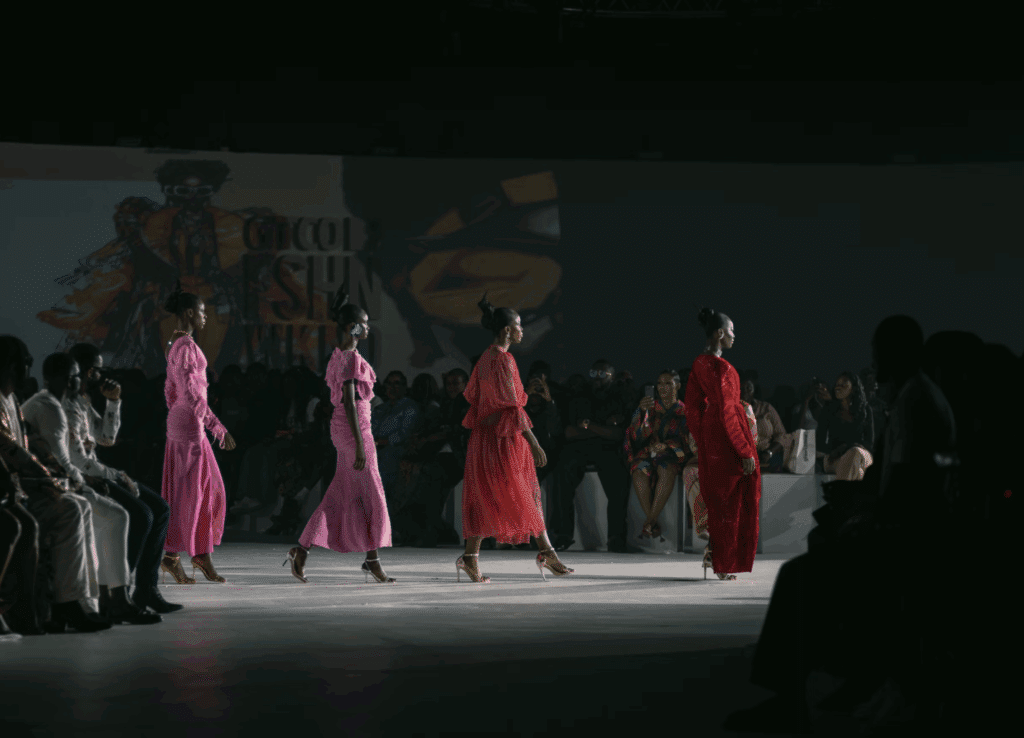
image: Cosmo
The fast fashion concept is backed by two such fundamentally attractive ideas – frequent novelty and affordability – that it has enabled brands in this part of the market to wreak utter havoc on the traditional model of mass market retailing. The incessant bankruptcy filings of traditional “mall retailers” as they have come to be known and even the speeding up of the production cycles in the upper-most echelon of the fashion industry – with brands’ new(ish) penchant for “drops” and immediately-shoppable runway capsules – is a testament to the power of fast fashion to transform the market.
Millennial consumers, in particular, embraced fast fashion – inexpensively and quickly-made takes on the latest runway trends sold at affordable prices – en masse. One of the best-case scenarios over the past decade or so has been Zara, which revolutionized the timeline of the mass-market supply chain and as a result, reported near-constant revenue increases. The Spanish retail giant – under parent company Inditex, whose owner, Armancio Ortega, until recently, occupied the number two spot on Forbes’ richest people in the world list – brought in 11.59 billion euros ($12.68 billion) in 2015, alone.
But something appears to be running amok even in this very sweet section of retail. While Inditex’s results for 2017 were positive (its total online sales jumped by a massive 41 percent for a year; its annual net profit was up by 7 percent to $4.2 billion), 2018 is looking much less stellar. “A stronger euro took its toll on Spanish retailer Inditex in its latest quarter, leading to lower profit margins at the owner of clothing chain Zara, while a cold snap dragged on sales of spring fashions at the start of its financial year,” Reuters reported last week.
Sales grew 9 percent in the first five weeks of the new financial year, “slower growth than expected by some analysts,” per Reuters.
This dip is nothing, however, compared to the steady decline that is H&M. The Swedish fast fashion giant – the world’s second-biggest fashion retailer after Inditex – has reported a 44 percent drop in first quarter profits and an operating profit that fell by 62 percent, the lowest report in nearly 20 years. Its stock slumped to the lowest level since 2005.
Meanwhile, H&M, which was already facing a less-than-optimistic forecast, pointed to heavy discounting, a $4 billion-plus mound of unsold merchandise, and bad weather for the latest hit to its bottom line.
Speaking about the losses, H&M CEO Karl-Johan Persson said this week that the company made mistakes by narrowing its assortment in 2017, though he expects sales to improve in the second half of this year. Speaking about the retailer’s failure to control markdowns and manage inventory, Persson, the 43-year-old scion of the billionaire Persson family, which owns not only H&M but COS, Arket, & Other Stories, and FaBric Scandinavien, as well, stated on Tuesday, “We haven’t improved fast enough. We’re working hard to fix that.”
In particular, Persson said H&M plans to reduce markdowns in the second half of 2018, when sales should improve and a weaker dollar will reduce garment costs, in addition to launching a new brand, Afound, to sell clothes from various brands, including H&M, at a discount. Still yet, the Swedish giant is adding three automated logistics centers this year to speed up deliveries in addition to making its debut on Tmall, the Alibaba-owned retail platform, in hopes of better serving the Chinese market.
Is Fast Fashion Dead?
In light of the recent declines on behalf of the market’s two largest apparel entities, it is difficult not to wonder if fast fashion is finally meeting its demise. Such a question seems appropriate given the rising awareness and interest amongst many millennial and Gen-Z consumers (the core consumer demographics for fast fashion) of the environmental harms and human rights issues that come hand-in-hand with the low-cost, high-speed manufacturing of inherently disposable fashion.
While the wokeness of the #MeToo movement, particularly amongst young consumers, may be adding to the traditional fast fashion retailers’ woes, the penchant for trendy and affordable fashion is not dying out.
It seems that traditional fast fashion brands are paying the price for evolving too slowly in the digital space, and consumers are simply spending their dollars elsewhere, as an array of low-cost, trend-specific competitors have entered the market in recent years, particularly in the form of digital natives that are significantly more apt at giving teens and young adults what they want.
Consider Fashion Nova. The Southern California-based retailer – which describes itself as the home of “cheap & affordable fashion online,” including “sexy club dresses, jeans, shoes, bodysuits, skirts and more” – is winning over hordes of young women with its steady stream of 600 and 900 new styles every single week on its website. Also worthy of note: Its dedication to providing apparel that works for a variety of different body types, something that traditional retailers have largely overlooked.
As for speed, Fashion Nova has every retailer lagging behind. H&M – the slowest in the group – releases 16 collections each year, with production times varying from a few weeks to six months. It takes Zara about 5 weeks to get a design from its origin to the store shelves, whereas British brands like Boohoo.com, ASOS and Missguided can produce merchandise in two to four weeks.
Fashion Nova is lightyears ahead. It can design, manufacture, and market its wares on its site within one to two weeks, according to its CEO Richard Saghian.
“To paying customers, especially hard to fit ones,” writes the Associated Press, “Fashion Nova symbolizes a revolution in terms of access to trendy, affordable clothes.” That revolution has seen the brand build a truly massive social media presence and a level of buzz that enabled it to nab the position of the fourth most-searched-for fashion brand in the U.S. for 2017, according to Google’s “Year In Search” ranking.
In short: Fashion Nova is essentially a more modern and at times, thanks to its arsenal of endorsers, such as Kylie Jenner, Cardi B, and La La Anthony, among others, more star-studded version, of your typical fast fashion retailer.
As Edited very aptly noted last fall, “Fast fashion is more about responding to the behavior of consumers than it is being beholden to a set strategy.” This is where the likes of Zara and H&M are falling behind and retailers, such as Fashion Nova, ASOS and Boohoo, are happy to pick up the profits.














